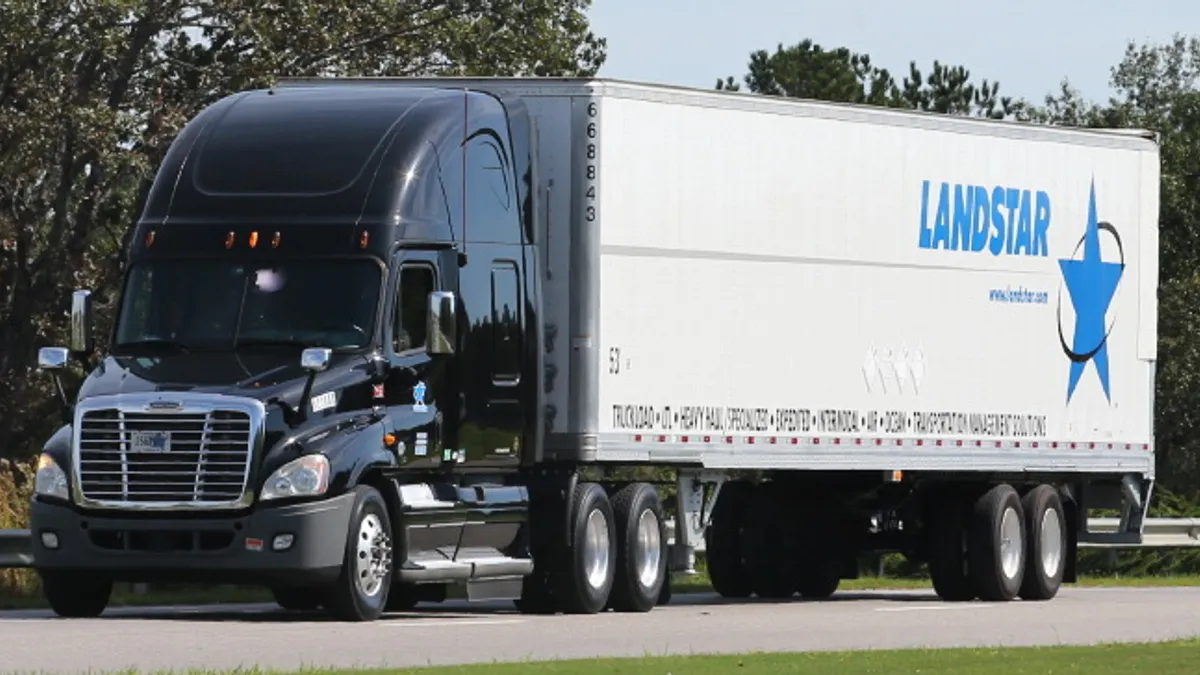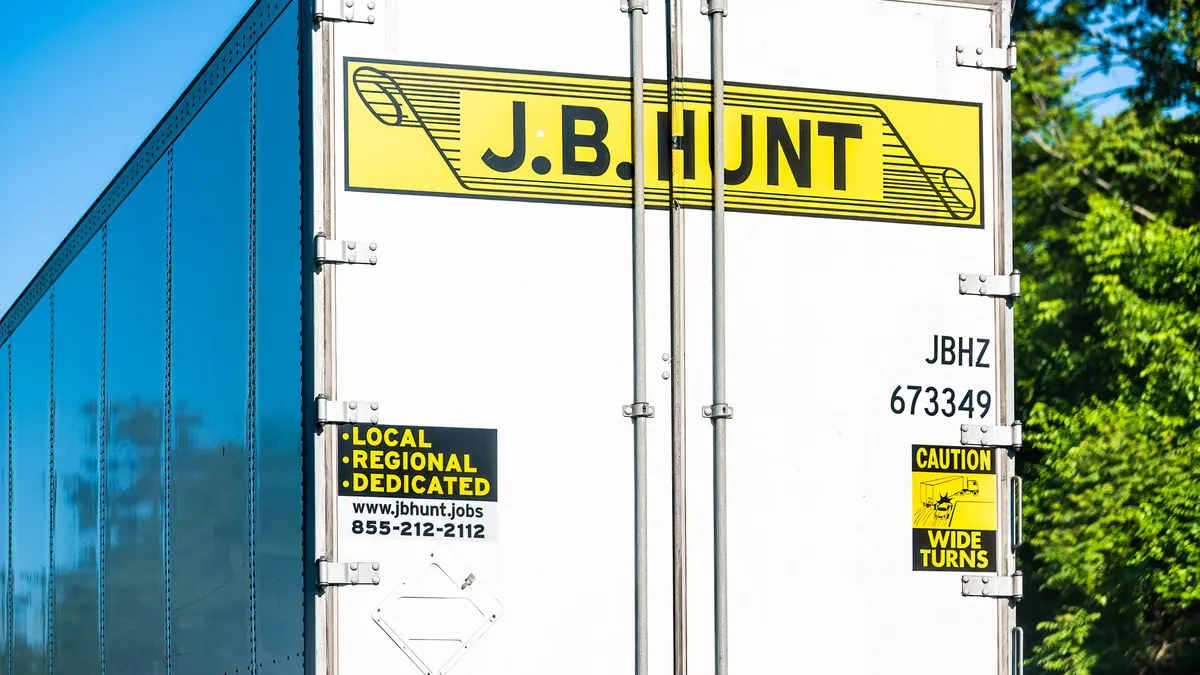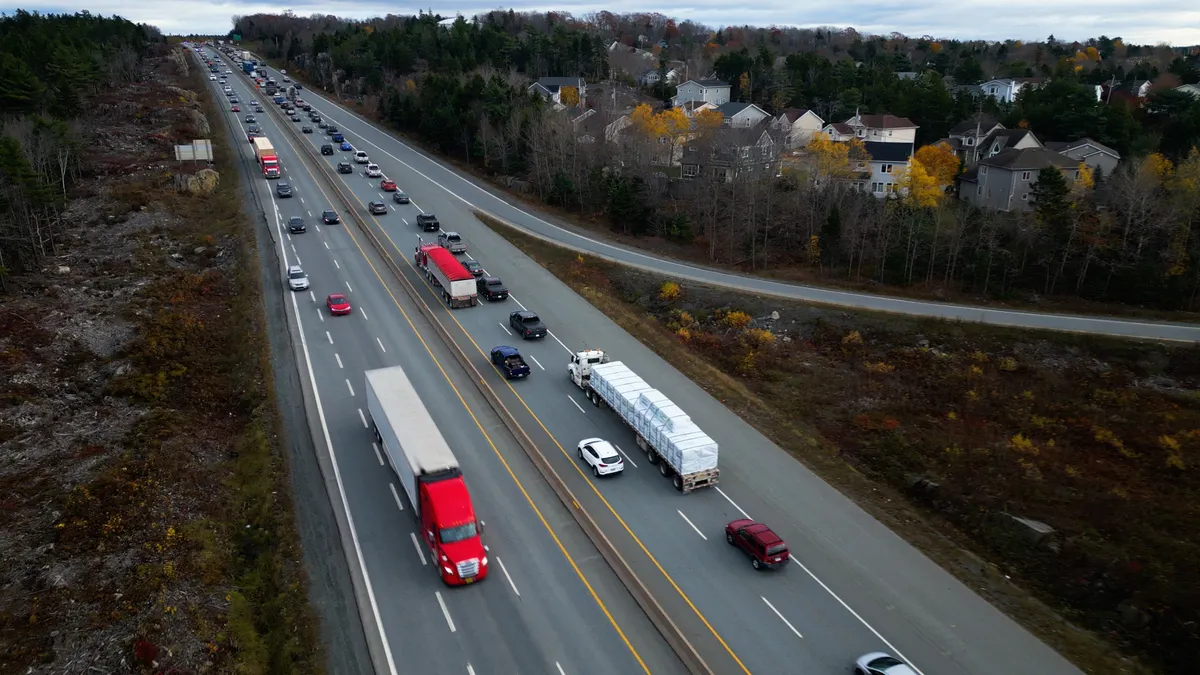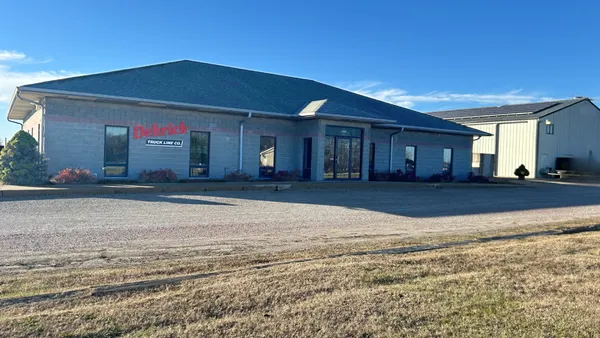Dive Brief:
- Landstar grew its average trailer fleet size by 11% in Q1 in response to heightened trucking demand, CFO Fred Pensotti said in an earnings call Thursday.
- The company hopes to order a few more trailers at the end of this year, despite expected price inflation of up to 30%. "We do anticipate it will be at a premium," Pensotti said.
- Landstar also plans to continue its roughly $25 million to $30 million per year investment in technology, "regardless of what the environment is," CEO Jim Gattoni said, referencing concerns about a softening freight market.
Dive Insight:
Trailers have been difficult to come by, and many OEMs spent the quarter working through a backlog in orders. Pent-up demand could be as high as 100,000 units, according to Don Ake, vice president of commercial vehicles at FTR. Ake predicts it will take "an extended time for OEMs to catch up with fleet requirements once the supply chain opens up."
If delivery schedules allow it, Knight-Swift Transportation aims to grow its trailer fleet by 10% despite the tight market for trailers, CEO David Jackson said on an earnings call Wednesday. "Used equipment is scarce and at all-time high prices, with very limited access to new trucks or new trailers, all of which is creating a very high barrier for any growth," Jackson said.
More equipment always carries costs, particularly in an inflationary market.
As Landstar's revenues soared by 53% YoY to nearly $2 billion, higher trailer equipment maintenance costs for replacement parts and labor contributed to a 46% increase in Q1 operating costs to $11.1 million. Landstar's operation now comprises more than 18,000 trailers and 11,935 shipper-owned trucks — up 71 trucks from the end of last year.
"The price of new trailers coming in haven't hit us yet, but [when] we start buying, those are gonna start hitting next year," Gattoni said.
Landstar is less exposed to a potentially softening freight market because it has dedicated customers driving shipper-owned trucks, "and the rates tend to hold a little more than they would in a true spot move," Gattoni said.
"What everybody's struggling with is, if the cycle’s down, how far does the cycle go down?" Gattoni said.
Jim Nicholson, senior vice president of operations at Loadsmart, a digital freight technology company, wondered in an interview whether the freight market might be headed for a broader resetting after two years of disruptions.
"What will be interesting to see is how these companies can manage their cost structures with increasing costs and buying equipment," Nicholson said. "These organizations have become more mature in how they build their businesses to be more resilient. But it's quite challenging when you have such high capital expenses."
Edwin Lopez contributed to this story.










